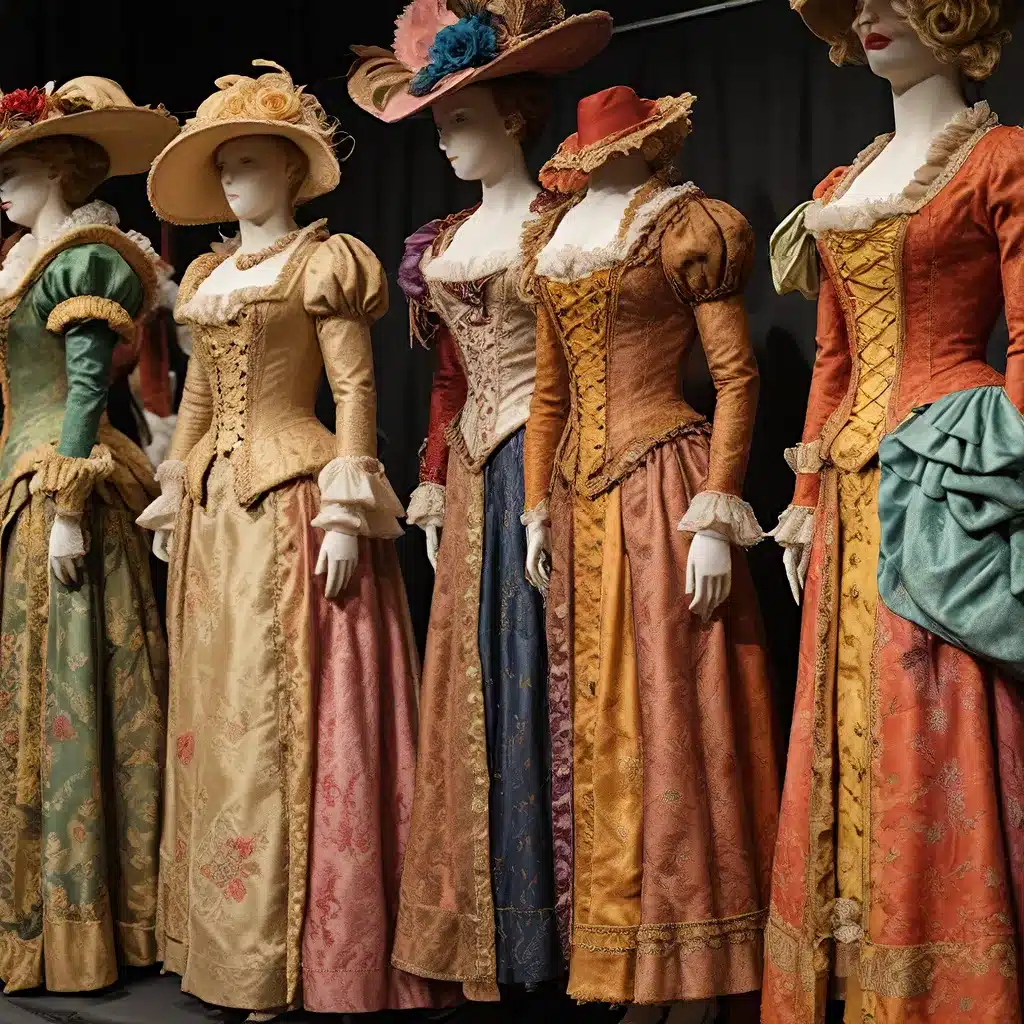
The Captivating Couture of the Stage
As I strolled through the halls of the Musical Theater Center, I couldn’t help but be mesmerized by the dazzling array of costumes adorning the walls. From the intricate beadwork of a ’20s flapper dress to the bold, striking silhouettes of futuristic superhero capes, these sartorial masterpieces told the stories of countless characters who had graced the stage. It was then that I realized – the true artistry of musical theater lies not just in the performances, but in the carefully curated costumes that bring those characters to life.
Unveiling the Wardrobe Wizardry
Have you ever wondered about the creative minds behind these stunning theatrical ensembles? Meet Willi Smith, a pioneering fashion designer whose work has left an indelible mark on the world of costume design. Smith’s approach to fashion was revolutionary, blending high-end couture with streetwear sensibilities to create pieces that were both visually stunning and deeply symbolic.
As Melissa Simon-Hartman, a fellow costume designer, shares, “Willi Smith was a master of using clothing to convey deeper meaning. Each garment he created was imbued with a sense of purpose, whether it was making a bold political statement or simply capturing the essence of a character.” This keen eye for storytelling through fashion is precisely what makes the art of theatrical wardrobe design so captivating.
The Costume Connoisseur’s Checklist
So, what exactly does it take to be a true costume connoisseur? Let’s dive into the key elements that elevate the craft of theatrical wardrobe design:
-
Meticulous Research: Before a single stitch is sewn, costume designers must immerse themselves in the world of the play or musical. They scour historical records, study cultural traditions, and analyze the characters’ personalities to ensure each costume is an authentic reflection of the story.
-
Innovative Fabrication: Costume design is not just about picking the right fabrics – it’s about pushing the boundaries of what’s possible. Designers like Willi Smith were known for their clever use of unconventional materials, from plastic to paper, to create truly unique and visually striking garments.
-
Attention to Detail: The devil is in the details when it comes to costume design. From the placement of a single sequin to the drape of a fabric, every element must be carefully considered to create a cohesive and captivating ensemble.
-
Collaborative Spirit: Successful costume designers understand that their work is part of a larger collaborative effort. They must work closely with directors, set designers, and lighting technicians to ensure their creations seamlessly integrate with the overall production.
-
Adaptability: The world of live performance is inherently unpredictable, and costume designers must be prepared to overcome unexpected challenges. Whether it’s a last-minute costume change or a technical malfunction, the true masters of the craft are able to think on their feet and find creative solutions.
Bringing Characters to Life
As I delve deeper into the world of theatrical wardrobe design, I’m struck by the sheer power of these costumes to transport audiences and bring characters to life. Take, for example, the iconic costumes from the Broadway production of “Hamilton.” Designer Paul Tazewell’s meticulous attention to historical accuracy, combined with his innovative use of modern fabrics and silhouettes, helped to create a visual tapestry that seamlessly blended the past and present.
Similarly, the fantastical costumes of “Wicked” have become as much a part of the show’s identity as the soaring musical numbers. Designer Susan Hilferty’s ability to capture the contrasting natures of the Wicked Witch of the West and Glinda the Good Witch through their respective outfits is a testament to the transformative power of costume design.
The Business of Costume Design
Of course, the art of theatrical wardrobe design is not just about the creative process – it’s also a thriving business. As Coen Tan, a marketing expert, reminds us, “If you want to sell more, you’ve got to stop selling and start leading.” This principle holds true for costume designers as well, who must not only be masters of their craft but also savvy entrepreneurs.
Successful costume designers understand the importance of thought leadership, continuously sharing their expertise and insights with the wider community. By positioning themselves as experts in their field, they are able to attract clients and secure lucrative contracts, all while elevating the art form they so passionately champion.
The Costume Connoisseur’s Call to Action
As I walk through the halls of the Musical Theater Center, surrounded by these sartorial marvels, I can’t help but feel a newfound appreciation for the costume designers who have dedicated their lives to this art form. From the meticulous research to the innovative fabrication, each costume is a testament to the passion, creativity, and sheer talent of these individuals.
So, if you consider yourself a true costume connoisseur, I challenge you to dive deeper into this captivating world. Explore the work of pioneering designers like Willi Smith and Melissa Simon-Hartman, and discover how they have used fashion to tell powerful stories. Immerse yourself in the behind-the-scenes magic of your favorite theatrical productions, and marvel at the transformative power of these sartorial masterpieces.
And who knows? Perhaps one day, you too will don the mantle of the costume designer, using your creative vision to bring characters to life and captivate audiences with the sheer artistry of theatrical wardrobe design. The stage is set, and the curtain is about to rise – let’s dive in and explore the captivating couture of the theater, shall we?

